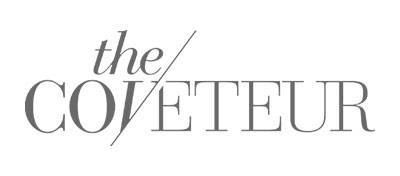The Coveteur
Bear with us, friends.
It’s no real surprise that when it comes to talking beauty, the conversation almost always lands on some exotic, nay, crazy concoction that has made its way from the East. You know those snail-infused sleep masks you’re obsessed with? Or that oil cleanser you use every AM and PM? Or the brightening serum responsible for your glow? All Asian imports. You gotta admit, when it comes to skin care, they’re onto something.
Are 10 steps really necessary? The answer: Yes.
Sure, it’s likely due to the fact that they’ve been up to it since, oh, let’s say 700 BCE, and have been busy passing down their techniques since then. While the likelihood that our brains could compute centuries’ worth of skin-care data is, well, questionable, it doesn’t mean we aren’t going to try (big emphasis on tryhere, guys).
If you haven’t gleaned over countless multi-step K-beauty articles by now (we’re going to ignore the fact that you’ve been living under a rock), here’s the gist of it all: Getting porcelain-like skin is all about cleansing (twice to be thorough), hyper-targeting skin issues (that’s where most of the steps lie), and protection (SPF; duh). We might be simplifying a bit, but we’re trying to ease you into it, OK?
What we’ve learned is that it isn’t a one-size-fits-all type deal, nor is it that difficult. To help you (and us) mine the hotbed of info, we went to the experts to tell us why it’s actually worth your time and money (just think about how much you’ll save on concealer).
THE FUNDAMENTALS:
1. OIL CLEANSER
Oil cleansers are an essential step for all skin types. They remove oil-based debris such as makeup, sebum, and soot.
2. FOAM CLEANSER
This is the second part of the double cleanse, which is necessary to thoroughly clean your skin at the end of the day. Foaming cleansers remove water-based debris such as sweat and dirt.
3. EXFOLIATOR (optional)
Not to be used daily, exfoliating renews your skin by scrubbing away dead skin cells.
4. TONER
This softens, moisturizes, and preps your skin to better absorb the essences and serums to follow. It also resets your pH balance after using the cleansers.
5. ESSENCE
These typically contain an active ingredient that optimizes your skin’s natural cell turnover rate—think skin regeneration.
6. SERUM
This is a more concentrated version of an essence, usually thicker in consistency. Different serums can hyper-target skin issues and are meant to be layered.
7. SHEET MASK
These are sometimes used in place of an essence.
8. EYE CREAM
This is meant to hydrate and protect the skin around your eyes.
9. SLEEPING MASK
Apply this to intensely hydrate and restore firmness as you sleep.
10. SPF
DR. KRAFFERT
BOARD CERTIFIED DERMATOLOGIST AND PRESIDENT OF AMARTE
On the legacy of Korean skin care…
“The first key to understanding the Korean skin-care industry is to understand the legacy behind it. Koreans have among the longest documented historical civilized legacies (dating back to 8,000 BCE) in the world. The peninsular geography with ample precipitation provided for a relatively stable socio-political environment and allowed artistic endeavors to flourish. Skin-care interest has been documented since the earliest Korean writings (700 BCE), and the Dongui Bogam, an ancient Korean medicinal text, has an entire section (the Tangaekpyeon) on preparation and use of herbal ingredients, including for skin concerns.”
On why Korean products are different than North American products…
“Novel skin-care ingredients and ingredient research and refinement are something for which Koreans have a great reputation. The state-of-the-art Korean skin-care technologies (and there are several) really do lead the world. These include unique ways of processing (and fermenting) plant extracts, utilizing nanotechnologies such as nano-sulfur and nano encapsulation of both EGF (Epidermal Growth Factor—aka human oligopeptide 1), and retinol, as well as unique ways of formulating with silicone-based emollients. A very different way of deploying emollients is actually a much sensed but little understood key component to the uniqueness and desirability of Korean products.
“Koreans (especially women, but men as well) view the care of skin as something to savor and enjoy. When it comes to daily skin-care regimens, the ‘sense of urgency’ and compulsion to hurry and finish are typically absent. Rather than compress and hurry, Koreans prefer to stretch out the skin-care process.”
When it comes to daily skin-care regimens, the ‘sense of urgency’ and compulsion to hurry and finish are typically absent.
— Dr. Kraffert
